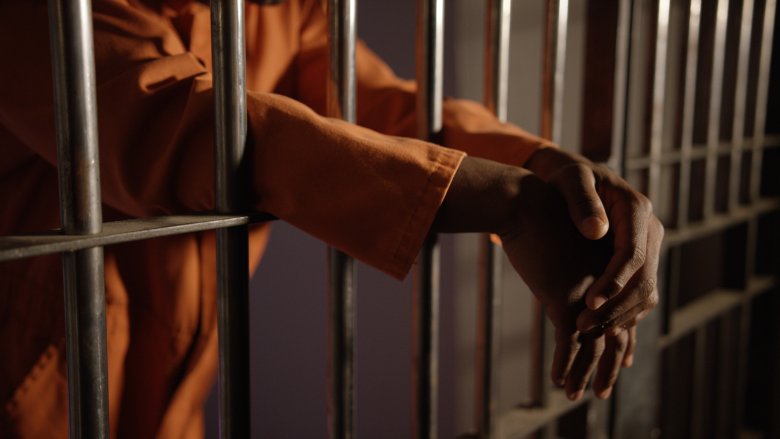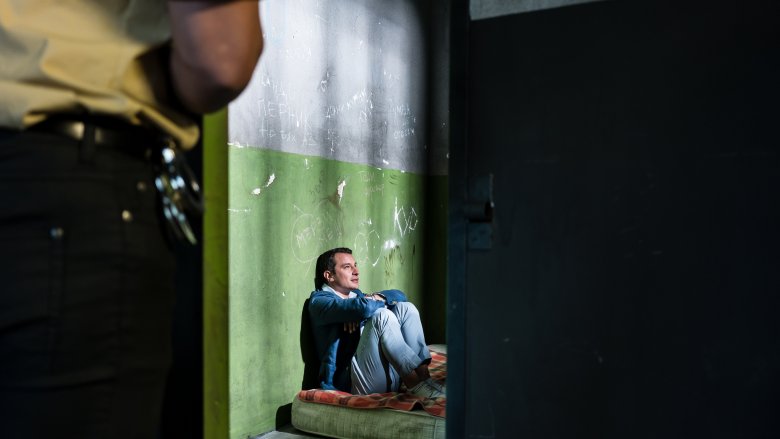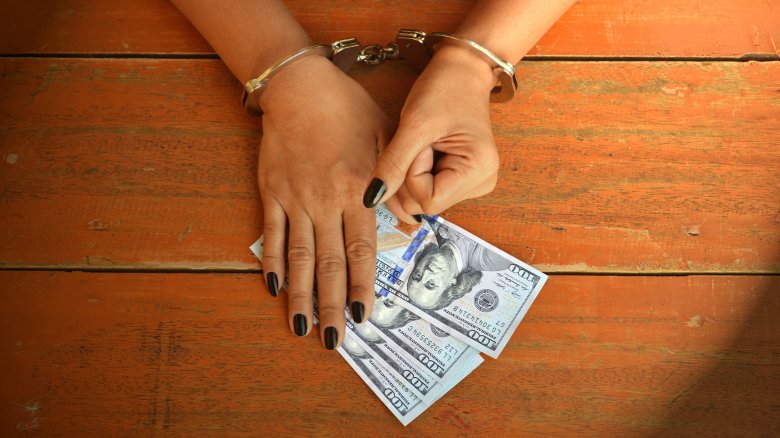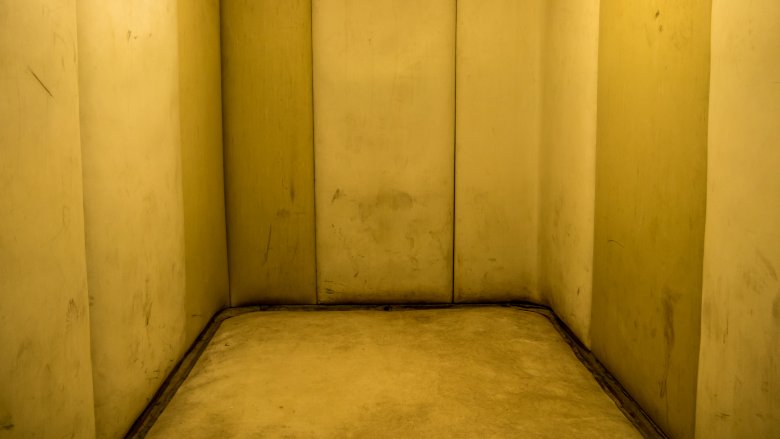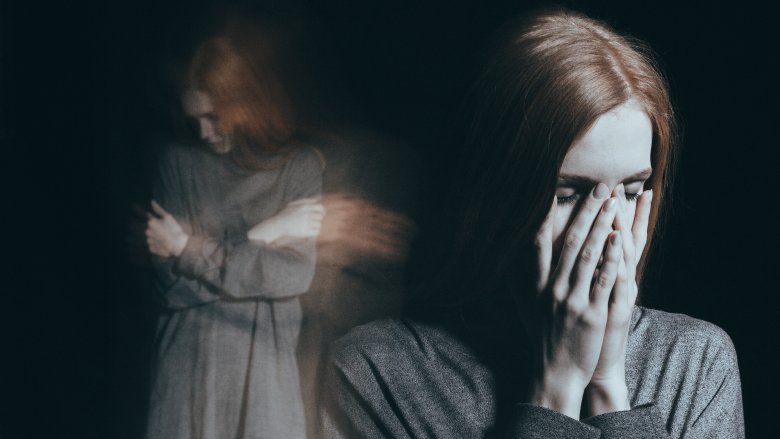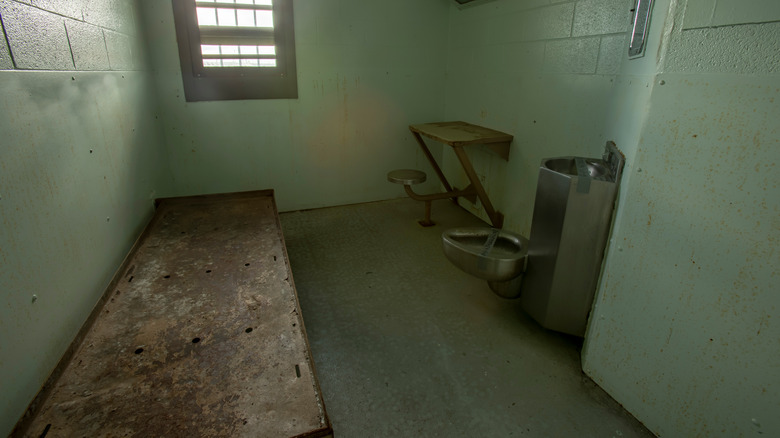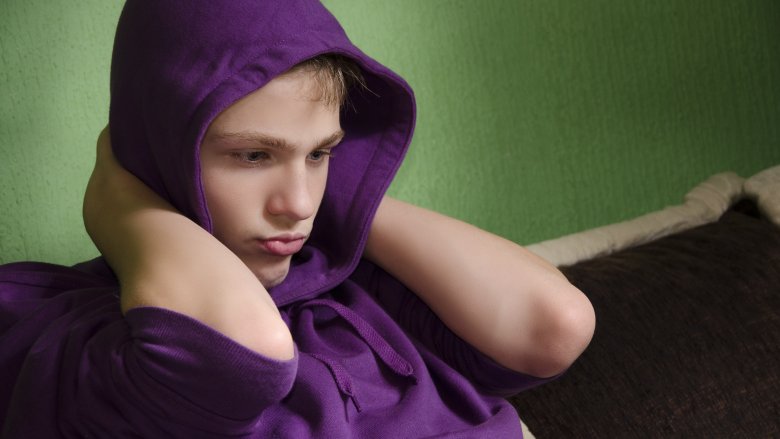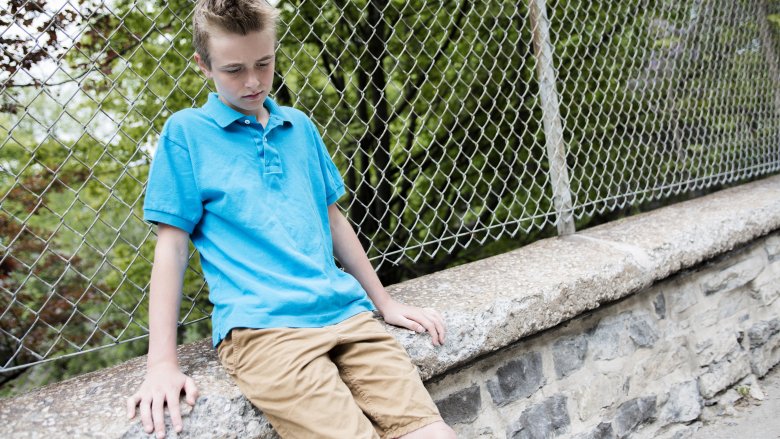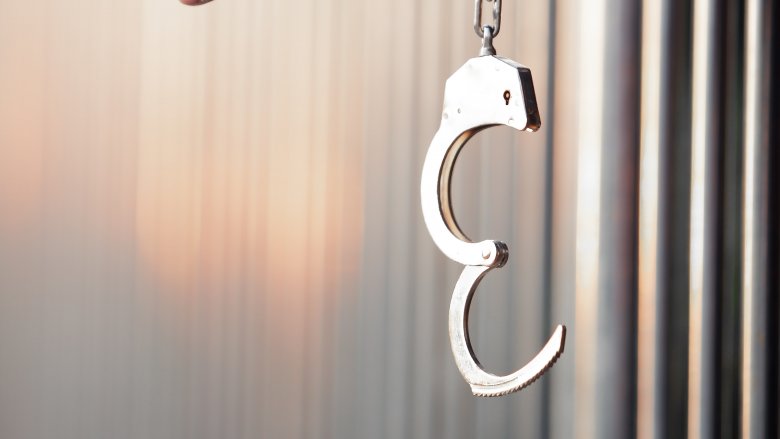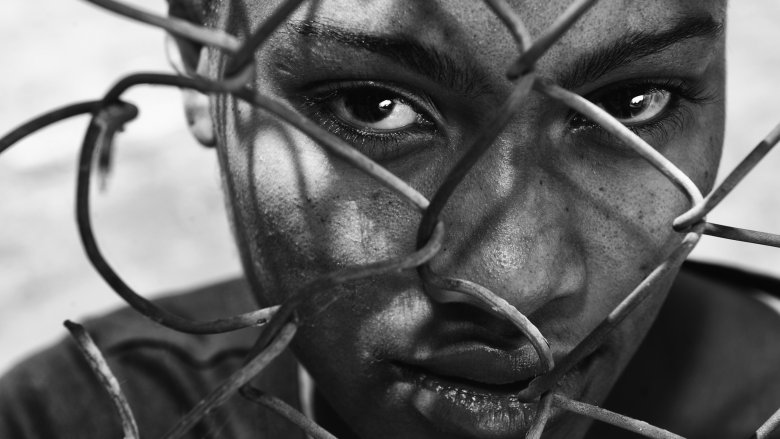Dark Secrets Of The U.S. Prison System
While there are varied opinions about the effectiveness of the American prison system, few people actually know the conflict that goes on behind closed doors. Inmates and officers are not at war with each other just for the hell of it, but rather for the impossible situation they find themselves in. The task of simultaneously punishing a person for a crime they committed and rehabilitating them to safely enter into the world again is overwhelmingly difficult. The idea of remaining in relative solitude for an extended period of time, in the hope of finding clarity about one's past and future, understandably achieves mixed results.
To make matters worse, prisons are overpopulated with inmates who rarely receive the individual attention and mental care they deserve. That perpetuates a cycle of troubling behavior which encourages those in power to punish accordingly. How can we better understand what inmates and officers are up against? By diving headfirst into the darkness.
All kinds of sexual manipulation
The relationship between prison inmates and officers is inherently conflicted, and everything gets more complicated when sex is involved. It's conceivable to imagine sexual activity between inmates, but between officers and inmates? That's a stretch, though it does happen. Award-winning reporter Shane Bauer went undercover as a prison guard at Winn Correctional Center in Winnfield, Louisiana, making $9 an hour. He emerged with some fascinating (and terrifying) recollections. During his training for the position, he describes being warned about how easy it is to be manipulated into sex by inmates. They get into the heads of officers and end up forming an emotional and physical attachment. And if that happens, the situation can quickly spiral out of control — even if the act is consensual, the officer can be caught and assigned the label of sex offender. It's not unheard of for them to be thrown into federal prison themselves.
Of course, it also happens the other way around. Officers lure inmates into performing oral sex, often with the threat of being thrown into solitary confinement or paired with a less-than-desirable bunk mate if they don't comply. Bauer reported that "nearly half of all allegations of sexual victimization in prisons involve staff." In addition to these instances, sexual harassment occurs frequently between staff and inmates. Bauer notes that some of these complaint cases are handled quickly, but others are left without a satisfying resolution.
Inmates convicted of nonviolent crimes remain stuck in prison when they can't make bail
It's no secret that prisons are overcrowded, but a little-known reason for this is that there are countless inmates stuck there because they can't make bail. NPR reported that "more than a half-million inmates sitting in American jails" were in that situation in 2010. Sometimes, they owe less than $100. When you have no money to begin with, any amount is a burden. Also, many of these people were arrested for nonviolent crimes, such as Leslie Chew who stole four blankets from a store to stay warm in the car he was sleeping in. On the dime of taxpayers, he sat in jail for more than 185 days awaiting trial. Unfortunately, like many things in life, having access to money is the only ticket out. With prisoners, bail is only the beginning. There are numerous legal fees associated with getting arrested, and those who can afford the best have a significantly better chance at winning their case.
Solitary confinement leaves inmates unfit for social interaction
In contrast to most of these secrets, solitary confinement is well documented in the news. People tend to be curious about the concept because long-term isolation is so unnatural. For the average socially adjusted person, the idea of being restricted to a few square feet for hours on end is unfathomable. The New Yorker highlights the fact that, just like children need a certain amount of nurturing through their infant years, adults continue to benefit from human interaction. When all that is stripped away in favor of limited access to social activity, healthy development of the human brain is jeopardized.
Additionally, living in solitary confinement means limited access to basic luxuries that indulge intellectual curiosity, like books, television, and the internet. More often than not, prisoners who are subjected to this treatment are left in a state of devastating loneliness and depression. Some become catatonic. Others are filled with rage. And then there are the physical repercussions of not being able to exercise enough, sleep in a comfortable bed, or feel the sunlight on your skin. With these elements combined, emerging from solitary confinement as a socially capable person is largely unheard of. Instead of being prepared to face the ups and downs of regular life, they're often paralyzed with fear.
Even inmates with mental illnesses are thrown in solitary confinement
In addition to the multitude of personalities in any given prison, there are many inmates who exhibit symptoms of mental illness. Pro Publica reports that more than half of U.S. inmates fall into this category, and their psychiatric needs are obviously more urgent than a mentally healthy inmate. When a psychiatric patient fails to adhere to the strict rules in prison, they can end up in solitary confinement for months on end. For someone who hears voices in their head or experiences hallucinations, living in a tiny, windowless cell and being deprived of the ability to talk through feelings with others is probably not the ideal environment to encourage any sense of well-being or personal stability.
According to New York Times Magazine, state prisons in New York are "unprepared for the task" of housing mentally ill inmates, despite their best efforts of introducing therapy programs and special housing units. It's not simply a problem of the inmates receiving more focused care, but the officers being trained to identify and deal with the unique characteristics of schizophrenia, severe depression, and other illnesses. If left untreated, those episodes can lead to fatal consequences. The way prisons deal with mentally ill inmates clearly needs to be overhauled, though there is no clear answer as to the best form of action. But hey, no rush, guys.
Solitary confinement encourages inmates to die by suicide
Among the many negative effects of being thrown in solitary confinement, suicide is by far the most devastating result. The American Journal of Public Health found that "detainees in solitary confinement in New York City jails were nearly seven times more likely to harm themselves than those in the general population." When you consider the main characteristics of solitary — receiving food through a tiny flap in the door and otherwise being left alone with essentially nothing to do — it's not surprising that inmates look for ways that they can end the trauma and prevent it from happening again.
To end up in solitary confinement, one would assume a prisoner would have to commit a serious violation, but Vice reports that inmates can be transferred to solitary confinement for minor infractions. And when the door is closed, an overwhelming sense of powerlessness envelops the prisoner. Even when presented with few objects (none of them sharp), they become very resourceful in securing methods to kill themselves and others. Thus, a vicious cycle of despair is constantly recycled.
Conditions in juvenile detention centers are appalling
When kids commit crimes and get sent to juvenile detention centers, one tends to imagine a place where strict rules are enforced and the root of unruly behavior is examined by a team of psychologists and social workers. While those elements exist, Wired reports that children are also subjected to windowless holding cells, restraint chairs, random strip-searches, and most shockingly, a lack of personal attention.
Photographer Richard Ross has spent time in juvenile detention centers as part of his photo series, Juvenile-In-Justice, and emphasized to Wired that the conditions need to be reevaluated. He interviewed many kids and learned about their difficult family backgrounds, which often involved homelessness, abuse, addiction and illiteracy. More often than not, these are kids who need counseling and rigorous education, not exposure to chaotic environments such as detention centers. "Some of these kids really don't stand a chance at all," Ross shared with Wired. "Have they committed crimes? Yes. But has society failed in their social contract to keep these kids in a safe environment? Absolutely." That is tragic.
Many minors are sentenced to life without parole
For minors who are convicted of violent crimes, the path toward rehabilitation is not really any less complicated than what adult offenders must endure. Pro Publica reported in 2012 that the Supreme Court banned mandatory life without parole sentences for minors convicted of murder, however the ruling was somewhat fuzzy and seemed to leave room for different states to try different approaches. For minors already serving life without parole sentences, they're weren't just automatically pulled out of prison. At best, their cases were reexamined. In the years that have followed, the main difference in dealing with juvenile offenders has been that their age and criminal history are given more consideration.
Children obviously don't have the maturity level that adults are expected to possess, so the judicial process requires a specific — and usually more lenient — approach. Yet, many inmates who were sentenced to prison at a young age remain incarcerated well into adulthood. The Pro Publica article highlighted the case of David Epps, who was convicted of home burglary and murder at age 16. By 2012, he had served over 30 years of a life sentence and will be eligible for parole in his mid-70s. Of course, by then, the chance of forging a respectable life that includes a career and family will be virtually impossible.
Inmates later found innocent still have to fight for their freedom
These days, there are a lot of people working toward exonerating prisoners who were wrongfully convicted. Through DNA evidence, the Innocence Project has exonerated hundreds of people over the last 30 years. But exoneration is not always a simple process where the prisoner walks free. Pro Publica reported that many prisoners are forced to agree to plea deals that prohibit them from clearing their names. They're given freedom in the physical sense, but on paper, their records indicate that they're convicted felons.
The West Memphis Three, who were accused of killing and mutilating three young boys in the early '90s and spend 18 years behind bars, famously took the Alford plea deal which granted them this half-freedom. Damien Echols is the most vocal of the West Memphis Three, and in a Vice interview he admitted having "no faith in the justice system whatsoever" because he's seen how corrupt it is from a first-hand perspective. He's still fighting for full exoneration, which could take years or decades to achieve.
Some prisons segregate inmates based on race
Just like schools once segregated students based on the color of their skin, prisons have been known to racially divide their inmates. Pro Publica reported in 2013 that some men's prisons in California have a color-coding system for white, black, and Hispanic inmates. It's an unofficial policy because the U.S. Supreme Court instructed California to end most race-based segregation in the mid-2000s. Responding to a lawsuit in 2012, the California Department of Corrections and Rehabilitation said the labels "provide visual cues that allow prison officials to prevent race-based victimization, reduce race-based violence, and prevent thefts and assaults." Gang violence is a problem in prison, but you wouldn't think that segregating inmates would really be the solution. Doesn't that seem like reinforcing the problem?
Rebekah Evenson, an attorney with the nonprofit Prison Law Office, told Pro Publica, "I haven't seen anything like it since the days of segregation, when you had colored drinking fountains."
